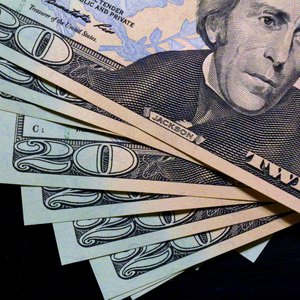
The Internal Revenue Service (IRS) strictly monitors money earned from investments for tax purposes. Dividends earned from stocks and mutual funds constitute the payment of a portion of company or fund profits, made to all investors in equal proportion to the number of shares each holds. The IRS recognizes two major categories of dividends, qualified and non-qualified. The primary difference between these two lies in the way in which you pay taxes on them.
Tips
The difference between non-qualified and qualified dividends is that qualified dividends are taxed at the applicable long-term capital gains rate while non-qualified dividends are taxed at a person's regular income tax rate.
Tax Differences
The notion of qualified vs. non-qualified dividends arises completely from methods of taxation. Qualified dividends constitute those eligible for taxation at the same rate as long-term capital gains, or 20 percent or less. Non-qualified dividends constitute those taxed at the same rate as the rest of your income. The IRS created these designations in 2003 as part of the Bush-era tax cuts. Though the qualified dividend system was initially temporary and set to expire in 2013, it was made permanent by a tax law passed in 2012.
Holding Period for Qualified Dividends
You must hold shares for a specific amount of time before they receive preferential tax treatment dividend payments. As per IRS requirements, you must own shares for at least 61 days during the 121-day period that begins 60 days before a company or fund declares dividends.
For instance, assume a mutual fund declares dividends on March 16. You purchased shares in that fund March 10 and still hold those shares as of May 19, 63 days after the purchase date. These shares qualify. However, if you sell your shares before May 17, or 61 days after May 10, they don’t qualify. Neither do any shares purchased after the ex-dividend date. If you sell some shares before the 61-day period lapses but keep others, the shares you keep still qualify.
Additional Qualifications
Dividends paid by foreign corporations meet qualifications if the company is incorporated in the United States and proves eligible for the benefits of a tax treaty, or if the dividend itself constitutes a tradable commodity on an established domestic securities market. Furthermore, corporations and funds must declare dividends as qualified in order for you to claim them as such. Fidelity investments, for instance, alerts shareholders as to how much of its dividend payments it reports as qualified on the ex-dividend date. Non-qualified dividends constitute all those failing to meet requirements.
One Share, Two Dividend Types
A single share may produce both qualified and non-qualified dividends. Assume you purchase 100 shares in A Corporation on March 10. On March 16, A Corporation announces dividends of $2 per share, entitling you to $200 in dividend payments. However, A Corporation also announces it reports only half of dividend payments as qualified dividends. This means you gain $100 of qualified dividends on this stock, taxable at the capital gains rate, and $100 in non-qualified dividends, taxable at the same rate as your standard income.
References
- IRS.gov: Publication 17 – Individual Retirement Arrangements
- Internal Revenue Service: Topic 404 – Dividends
- MarketWatch: Your Simple Guide to the New Capital Gains Tax Rates
- Tax Policy Center: Who Benefits From the Zero Percent Tax Bracket for Capital Gains And Dividends?
- Internal Revenue Service (IRS). "IRS Provides Tax Inflation Adjustments for Tax Year 2020." Accessed Aug. 5, 2020.
- Internal Revenue Service (IRS). "Publication 550: Investment Income and Expenses (Including Capital Gains and Losses)," Page 23. Accessed Aug. 5, 2020.
- Internal Revenue Service (IRS). "Publication 550: Investment Income and Expenses (Including Capital Gains and Losses)," Page 67. Accessed Aug. 5, 2020.
- Internal Revenue Service (IRS). "Publication 550: Investment Income and Expenses (Including Capital Gains and Losses)," Page 3. Accessed Aug. 5, 2020.
- Internal Revenue Service (IRS). "Publication 550: Investment Income and Expenses (Including Capital Gains and Losses)," Page 19. Accessed Aug. 5, 2020.
- Internal Revenue Service (IRS). "Publication 550: Investment Income and Expenses (Including Capital Gains and Losses)," Page 20. Accessed Aug. 5, 2020.
Writer Bio
Will Gish slipped into itinerancy and writing in 2005. His work can be found on various websites. He is the primary entertainment writer for "College Gentleman" magazine and contributes content to various other music and film websites. Gish has a Bachelor of Arts in art history from University of Massachusetts, Amherst.

